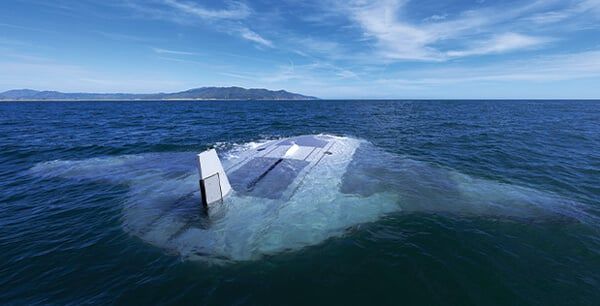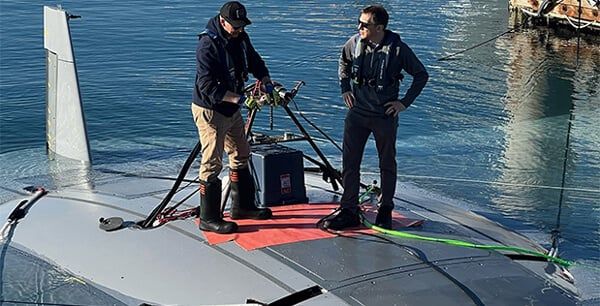
Borrowing a page from 1960s science fiction programming, officials at DARPA (the U.S. Defense Advanced Research Projects Agency) released the first pictures of Manta Ray, an in-development extended duration uncrewed undersea vehicle (UUV). They confirmed that contractor Northrop Grumman completed full-scale, in-water testing in February and March and that further testing is continuing on an energy harvesting system developed by PacMar Technologies.
The government confirmed the program had begun in 2020 and at the end of 2021 awarded Phase 2 contracts to perform subsystem testing followed by fabrication and in-water demonstrations of full-scale integrated vehicles.
The concept is for a new class of long-duration, long-range, payload-capable UUV. Describing the objectives DARPA said Manta Ray should be able to operate independently of manned vessels and ports once deployed. The goal is to have an independent system that would operate for extended durations without humans providing logistical support or maintenance.
Researchers highlighted a broad range of challenges for the program ranging from energy management to the ability to harvest undersea energy. The vessel needs to have low-power high-efficiency undersea propulsion as well as low-power systems to detect hazards or threats. They also face more basic challenges of biofouling, corrosion, and material degradation during long-duration missions.
“Our successful, full-scale Manta Ray testing validates the vehicle’s readiness to advance toward real-world operations after being rapidly assembled in the field from modular subsections,” said Dr. Kyle Woerner, DARPA program manager for Manta Ray. “The combination of cross-country modular transportation, in-field assembly, and subsequent deployment demonstrates a first-of-kind capability for an extra-large UUV.”
They highlighted that Northrup Grumman shipped the prototype in subsections to the test location in Southern California. They said this demonstrates the ease of shipping, and that assembly supports the possibility of rapid deployment throughout the world.
No details were provided on the size of other features of Manta Ray. A picture however shows two individuals standing atop the full-scale assembly.
DARPA’s Woerner however did say, “Once deployed, the vehicle uses efficient, buoyancy-driven gliding to move through the water. The craft is designed with several payload bays of multiple sizes and types to enable a wide variety of naval mission sets.”
PacMar Technologies conducted tests off Hawaii last fall. They verified sensors, vehicle hydrodynamic performance, and key autonomy behavior.
DARPA said it now engaging with the U.S. Navy on the next steps for testing and transition of this technology.



We use cookies to improve your experience. By continuing to use our site, you accept our Cookies, Privacy Policy,Terms and Conditions. Close X